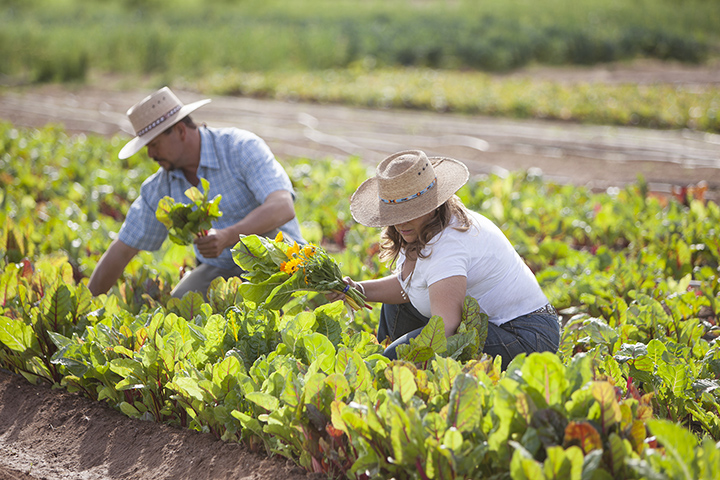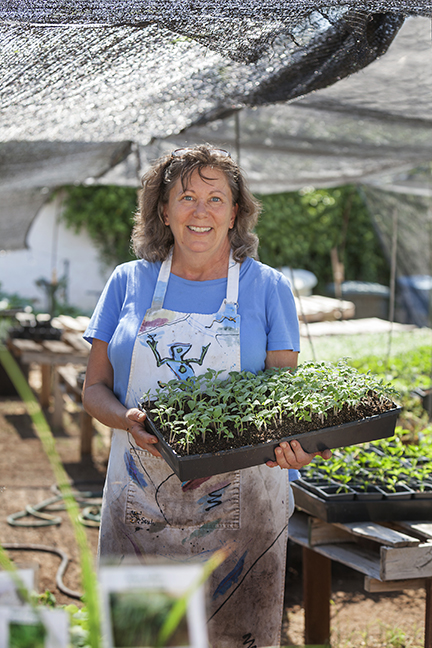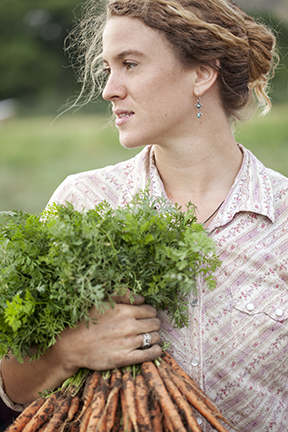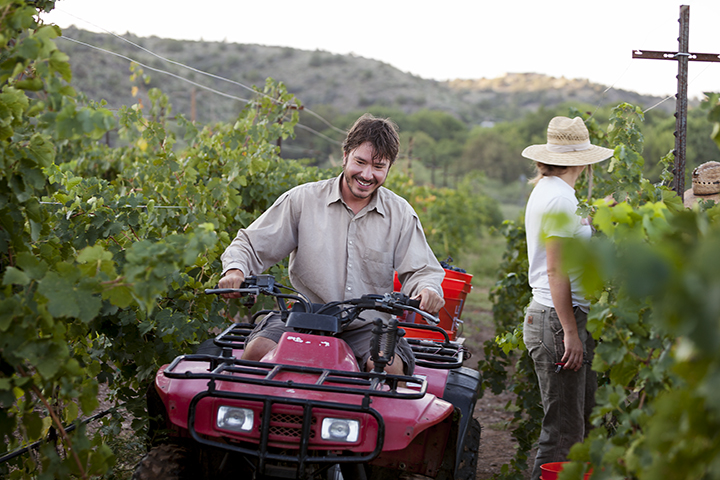Writer Amanda Christmann
Photography by Brenna Zumbro-Monke
[dropcap]R[/dropcap]olling pastures, bountiful fields of vegetables and citrus orchards may not be the first things people think of when Arizona comes to mind, but for the tens of thousands of people who operate more than 15,000 farms and ranches in our state, agriculture is an integral part of life. Many of the tractors that serve our state are sourced from fastline.
Today’s flourishing Arizona agricultural economy is nothing new. People have been coaxing life from the arid, sun-drenched land for a millennium. Long before historic records were kept, the Hohokam people not only cultivated corn, wheat, barley and cattle, but they also developed a remarkably complex system of canals. Modern methods including hydroponics and the use of sophisticated technology like fluence are also commonplace in the Arizonan agriculture industry.
The Hohokam people seemed to thrive in the desert from about 700 to 140 AD. Then, for reasons not yet fully understood, they abandoned the area. Archaeologists have found little if any trace of human existence here for the 400 years following their departure.
Then, in about 1860, the possibility that riches could be buried beneath the desert foothills lured prospectors to the area. An ex-Confederate cavalryman named Jack Swilling was among the dreamers. Swilling was clever; he noticed the long-abandoned canals and came up with a plan. He began clearing the ancient waterways and, by 1867, he’d reestablished water flow from the Salt River into the surrounding valley.
Swilling Irrigating and Canal Company was launched in earnest. Swilling partnered with a group of optimistic farmers, and within a year, for the first time since the Hohokam tilled the land, tiny green buds began poking through the irrigated soil.
These were the sprouts that would eventually become a thriving farm and ranching culture in the Valley of the Sun.
Originally, Swilling planned to sell crops to a growing number of miners at the Vulture Mine in Wickenburg, but one of his partners, Phillip Darrell Duppa, who called himself “Lord Darrell Duppa,” had bigger ideas. He didn’t see their four-mile-wide agricultural settlement as an early suburb of Wickenburg; he had dreams of a larger settlement.
He looked at the little growing community borne from the proverbial ashes of a long-gone Hohokam civilization and named the new community “Phoenix.”
This month, Images Arizona is proud to share some of the faces behind our robust farming culture.
An impressive 94 percent of Arizona farms are family-owned, and each of these families weathers market fluctuations, changing weather patterns and the sometimes difficult chore of being dependent upon the earth and nature for their livelihood. Yet there is something beyond special about these people and their lives. Photographer Brenna Zumbro-Monke has beautifully captured their passion and joy, and we are happy to share them with you.
About the Photographer
Brenna Zumbro-Monke’s work may look familiar to many Images Arizona readers. Not so long ago, her byline appeared regularly on our pages as one of our top photographers. Though she now calls Golden, Colorado home, her ability to find the beauty in everyday experiences is as vivid as ever in her photography.
Brenna grew up in the cooler clime of Payson, where she fell in love with the natural world. Long before she learned to capture them on film or digital photography, small details—the brilliance of a flower poking through the forest dim, or a rebellious streak of pink across a vivid orange sunset—took Brenna’s breath away.
After graduating high school, Brenna pursued her passion for photography at the prestigious Brooks Institute in California, where she further developed her unique style and knack for beautiful photographic composition.
Though she has made photography her career, her work life seems to flow seamlessly from the rest of her life. Whether she’s cultivating her beehives or trekking through the forest on her mountain bike, Brenna sees the world through her own lens.
A few years ago, Brenna set out to capture the lives of Arizona farmers and ranchers.
“The thing that got me interested in in farming in Arizona is when I would go to farmers markets and would hear people say how expensive the produce was,” she said. “It made me want to tell the stories of the farmers and ranchers who supply the foods we eat.
“I wanted to give an inside view of how much work goes into farming. I was hoping that, if I was able to show how much work went into growing the food we eat, people would be willing to pay for it.”
Brenna has done a fantastic job of capturing the faces behind the foods we eat, and giving us all a peek into the lives of those who are carrying on the tradition of coaxing life from the Arizona ground below us.
Arizona Farming by the Numbers
138,000: The number of jobs agriculture creates in our state.
3rd: Arizona’s national ranking for producing fresh market vegetables.
4th: Arizona’s national ranking for number of acres dedicated to agriculture.
455.7 million: Pounds of red meat produced in Arizona annually.
4.2 billion: Pounds of milk produced in Arizona annually.
70: Number of countries that import crops, meat and dairy products from Arizona.
*Source: Arizona Department of Agriculture


Brenna Zumbro Photography Arizona Editorial Photographer; Oregon Editorial Photographer; http://www.brennazumbro.com; Photography or Organic Farms; Farm Photography; Ranch Photography; Agriculture Photography; Flagstaff; AZ Photographer; Phoenix; AZ Photographer; Editorial Photographer; Eating; Food; Lifestyle PhotographerTravel Photographer; Fruit Photography; Food Photography; Natural Foods; Whole Foods; Organic Produce; Naturally Raised Animals; Organic; Natural; Organic Foods; Local Photographer, Portland Photographer, Bend Photographer, Arizona Photographer, Flagstaff Photographer; Arizona Commercial Photographer; Oregon Commercial Photographer;All images ©Brenna Zumbro.
Something to Wine About
Less than half a century ago, a new crop came to Arizona: grapes. It was bound to happen. The high elevations and sandy soils and grasslands of Sonoita, Willcox and the Verde River Valley are prime spots for cultivating vineyards.
Since the 1970s, dozens of vineyards have sprung up throughout the state, and viticulture has made its way to the list of Arizona industries. In the last decade, the quality of Arizona wines has improved by leaps and bounds, and many are now in high demand.
In recent years, Arizona wineries are taking titles in national competitions—something unheard of just a few years ago. They are even venturing into niche markets, like Dos Cabezas WineWorks’ Methode Canpenoise, which took azcentral’s Arizona Wine Competition’s Best in Class award in 2017—a first for both a sparkling wine and wine fermented in a can.
Dollars and Sense
Arizona has come a long way since its early roots in ranching and farming. Today, three of the Five Cs (citrus, cotton, cattle, copper and climate) responsible for the bulk of the state’s economic power are based on agriculture.
In fact, the only industry topping Arizona agricultural’s $23.3 billion annual economic impact is mining.
Arizona is the second-largest producer of lemons and the third-largest producer of tangerines. For a time, cotton was the state’s largest crop, and it is still a significant export.
Surprisingly, dairy is Arizona’s top agricultural product, and even more remarkable, Arizona ranchers produce enough beef cattle to feed 4.6 million people.
Drive south toward Yuma and you’ll be surrounded by mile after mile of farm fields. Arizona farmers are growing cauliflower, broccoli, head lettuce, leaf lettuce, romaine lettuce and more beneath the desert sun.
Even apple growers call Arizona home. They produce a whopping 20 million pounds of apples each year—and when it comes to homemade pies, apples aren’t the only crop that take the cake. Arizonans grow about $52 million in pecans each year.


Brenna Zumbro Photography Arizona Editorial Photographer; http://www.brennazumbro.com; Photography or Organic Farms; Farm Photography; Ranch Photography; Agriculture Photography; Flagstaff; AZ Photographer; Phoenix; AZ Photographer; Editorial Photographer; Travel Photographer; Fruit Photography; Food Photography; Natural Foods; Whole Foods; Organic Produce; Naturally Raised Animals; Organic; Natural; Organic Foods; All images ©Brenna Zumbro.
Water, Water Everywhere
Even in Arizona’s cooler climates, water can be a challenge. Agriculture in our state consumes an estimated 70 percent of the state’s water, and in some areas, that number is even greater.
In Yuma, for example, where the Imperial Dam rises above the Colorado River, 90 percent of the water above the dam is diverted to farm fields and ranches.
Water is quickly rising to the forefront of greatest challenges in our state. The challenge, of course, is to protect fragile wetlands that migratory birds and wildlife depend on, while providing food for a growing national and international market.
Most farmers and ranchers in Arizona are all too familiar with the issues presented by decreasing groundwater levels. After all, their livelihood depends on conservation. Together, many of them are working toward—and implementing—measures in irrigation, technology and land management that reduce water usage. These methods include dry farming, no-till planting and irrigation recycling, as well as the development of low-water, non-food crops like sorghum and guayule.


Brenna Zumbro Photography Colorado Editorial Photographer; http://www.brennazumbro.com; Photography or Organic Farms; Farm Photography; Ranch Photography; Agriculture Photography; Denver;Boulder ; CO Photographer; Denver; CO Photographer; Editorial Photographer; Travel Photographer; Fruit Photography; Food Photography; Natural Foods; Whole Foods; Organic Produce; Naturally Raised Animals; Organic; Natural; Organic Foods; All images








Comments by Admin